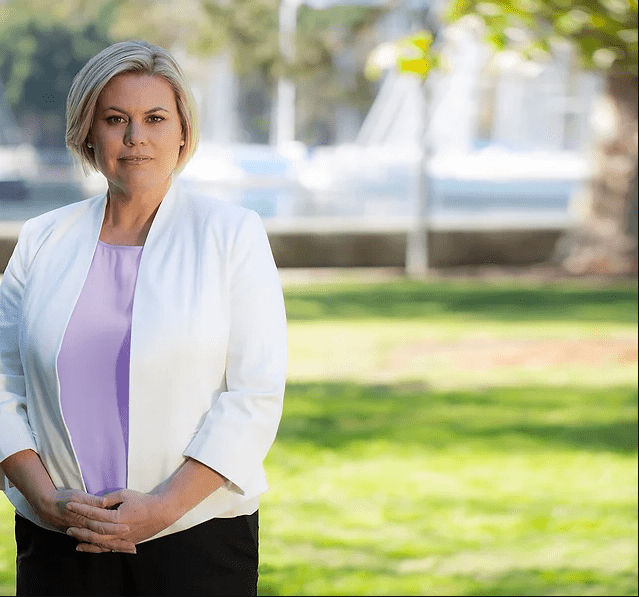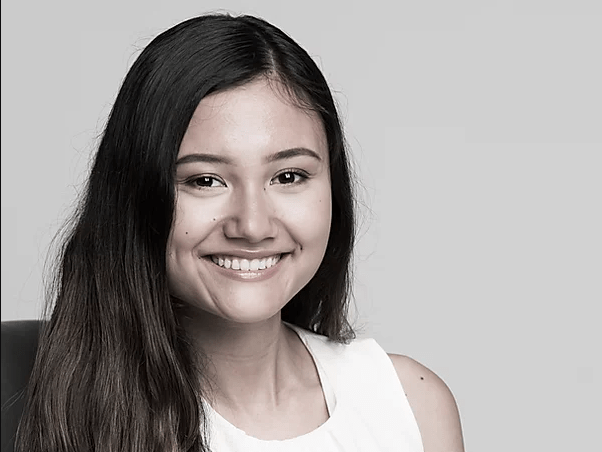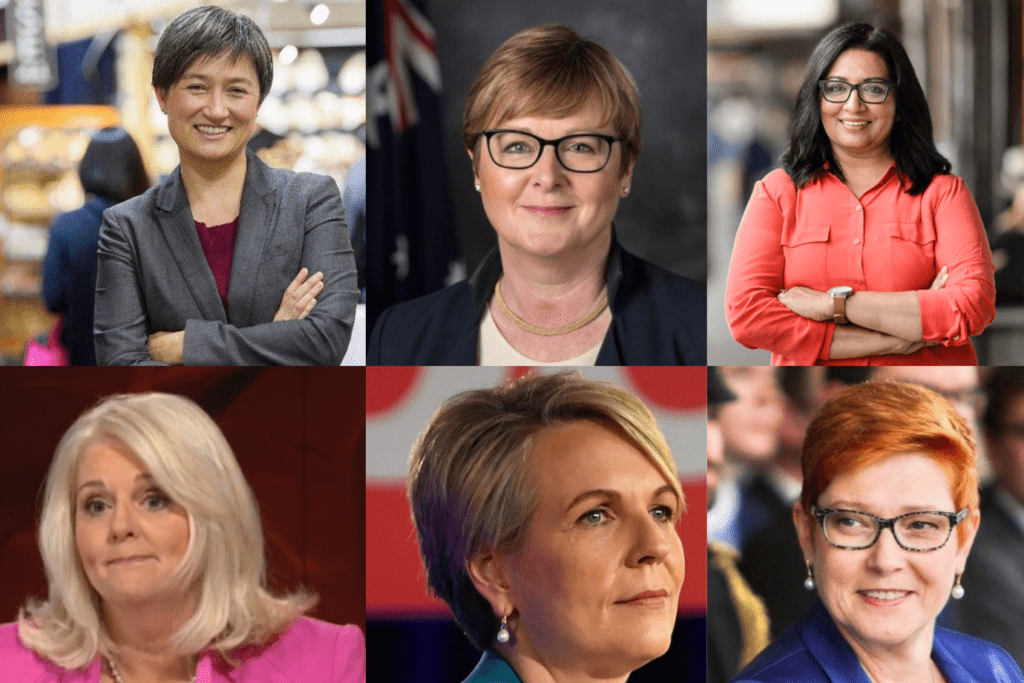In June, Chris Wallace, an associate professor at the University of Canberra’s 50/50 by 2030 Foundation, wrote a piece for The Conversation in which she claimed that Morrison’s decision to end free child care and single out the overwhelmingly female child-care workforce for the early end of Job Keeper “should have women storming for preselection across Australia’s political spectrum”.
Wishful thinking, or prescient call to arms?
Wallace was giving voice to the frustration many women have felt about their lack of a seat at various powerful, political tables. And their related frustration that this lack of representation is obvious in the Coalition’s series of COVID-19-related response and recovery proposals – proposals that have either ignored or undermined women’s interests.
Let’s do the numbers: Morrison’s 23-member cabinet includes just six women. The powerful Expenditure Review Committee, a subcommittee of Cabinet, has no women. And the COVID-19 Coordination committee was launched with just two women among its eight members (it now has four).
According to the Inter-Parliamentary Union’s global ranking of women elected to national parliaments, Australia ranks a poor 47th. And according to the 2020 World Economic Forum’s Gender Gap Index, Australia sits at #57 in terms of women’s political representation.
As a result, it’s not surprising, some would even say entirely predictable, that even though Australia is clearly in the midst of a “she-cession” — women are over-represented amongst the COVID-19 related job losses and the high-risk “essential” workers, while they’re also carrying a disproportionate share of the pandemic unpaid domestic load, significantly impacting their ability to do paid work – a “blokecovery” seems to be on the horizon.
The lack of women in political leadership — along with an almost complete absence of gender impact assessments in policy-making or budgeting — is responsible.
Are many women miffed? Yes.
Will that inspire them to storm the metaphorical political barricades in unprecedented numbers, just as various events, including a visceral reaction to Hillary Clinton’s 2016 loss and Trump’s unchecked sexism, inspired the so-called “women’s wave” at the 2018 US mid-term elections?
Maybe.
But the pandemic could also exacerbate some of the practical barriers, barriers that have long hampered women’s political prospects. And that has some experts worried.
“Women are mobilising in Australia”
On the whole, Licia Heath, the CEO of Women for Election Australia, a non-partisan group committed to increasing the number of women in public office at the local, state and federal levels, is optimistic. She believes the wave is already gathering momentum, and the pandemic will only further cement many women’s determination to run for political office.
“Women are mobilizing in Australia,” says Heath. “They’ve got their head up now; they may have had it down because of that busy, modern life, but they’re looking around now and they’re not down with what’s happening.”
“When we had our inaugural WFEA conference in 2017, we were still trying to fill seats a day before,” adds Heath. “Now we’re selling out, and we have reserve lists.”

Heath says that women are reaching out from across the political spectrum in unprecedented numbers, and they’re driven by a number of different factors, including issues specific to their local constituency and national, policy-based issues, particularly those highlighted by the pandemic.
“I have emails from women all over Australia who want to do something,” she says. “I just got an email a few days ago from a woman seeking to address childcare policy and drive that at the next federal election.”
Interestingly, Heath adds, while WFEA’s remit includes both inspiring and equipping women to run for office, they have found that they no longer really need to focus on the “inspiration” side of the equation. When asked if the Liberal Party was providing that “inspiration” via some of their more recent, noteworthy gaffes, including suggesting women should be happy to give birth next to an upgraded highway rather than a properly equipped regional hospital and women should return to hearth and home to breed “one for country” to fuel Australia’s post-pandemic economic recovery, Heath was conspicuously silent.
Yasmin Poole, a gender equality advocate, speaker and consultant, who focuses specifically on issues impacting young women and women of colour, who have been hit more than women generally by the pandemic’s economic reverberations, is equally keen on seeing women, particularly younger, diverse women, redress the imbalance as “we have no voice”.

“Unmasking what the policies actually represent involves taking the Government to task on their atrocious gender representation,” says Poole. “The only way we can get there is if we have more women… and change our idea of leadership.”
Local Government elections: canary in the coalmine?
For many long-time advocates for more women in politics, including Ruth McGowan, author of Get Elected, the upcoming local government elections in Victoria in October will serve as a canary in the coalmine, with a possible decrease in women’s local representation driven by long-standing practical barriers exacerbated by the pandemic signalling the start of a troubling downward trend.
“We are heading towards a precipitous drop in women’s representation at the local level,” says McGowan. She tells Women’s Agenda that due in no small part to the relentless demands of the pandemic on women, including the “triple shift” of domestic care at a time when schools and childcare are closed, some women are deciding that it’s all too much and stepping down. What’s more, a number of women who were thinking about running are opting out.
“It’s difficult for women at the best of times,” says McGowan. “When you overlay the difficulty of campaigning in a COVID-19 environment, for some it’s just too much.”

McGowan was not impressed by the Victorian Government’s decision to invest in a tone deaf $50,000 marketing campaign designed to “inspire” more women to run for local government with the slogan, “It’s Our Time”. The campaign is due to launch on Monday. “They know it’s time,” says McGowan. “They just can’t do it.”
What’s more, the “It’s Our Time” campaign puts the onus back on women to run, adds McGowan, rather than addressing some of the practical issues they are facing in this particular election. For example, can they door knock and letterbox? Women candidates are less likely to have an established profile or the disposable income to invest in the alternative, a costly direct mail campaign.
McGowan also points to a requirement for candidates to attend mandatory in person candidate training. While the training was moved online due to COVID-19 restrictions, it’s only online and in English, raising questions about accessibility.
The majority of existing councillors surveyed by the Municipal Association of Victoria said that due to these constraints, and the potential impact on gender equitable representation, the Victorian local elections should be deferred.
“It would be great if more women were inspired to run,” says Coral Ross, President of the Municipal Association of Victoria. “But I’m not hearing that. I’m just hearing about the difficulties.” Ross adds that it is “incredibly concerning” that Victoria has not followed New South Wales and deferred the local elections.
“More motivated than ever”
Deepti Alurkar, a mum of two young girls, a small business owner, and a gender equality advocate who migrated to Northwest Victoria from Mumbai ten years ago, plans to press ahead despite the challenges. With a background working with young migrant women in her community, Alurkar says, “It’s important for women to have a voice on a larger platform.”

“This pandemic has impacted women on so many fronts,” she adds. “Women have lost jobs, they are working fewer hours as they focus on home-schooling their children…we have to be more motivated than ever to step up and ensure women are there to help plan the recovery.”
Amy Muratore, a young mum and teacher who is planning to run for a local seat in the Dandenong Ranges, concurs. While she admits that she momentarily considered not running, she says that she ultimately reflected on why she decided to run in the first place. Of the nine councillors in her local Shire, only one is a woman. “It was always going to be hard,” she says. “The rules are different for women.”

“But even if I don’t win, I’m a great believer that you need to achieve something with your campaign,” adds Murano. “Women need to be in this fight, taking up space”.
Women are also exploring options beyond the major parties, such as Bethany Williams, who is running for the Canberra Progressive at the upcoming ACT Government election in October.
She describes herself as never believing she was “someone important enough to put her hand up to do something about it” but then having a moment more than 18 months ago when she realised “you’re not finished yet”. She’s become increasingly active on social media, calling out issues as she see them and building a large following. David Leyonhjelm might be interested to know he helped inspire it, with his defamatory comments about Sarah Hanson-Young’s really spurring her into the action that would gain so much more momentum during this pandemic year.

“That was my ‘aha’ moment, when I thought we need more women in government, and I want to get in there because this was just completely unacceptable.” The past few months have pushed her further, particularly witnessing how some political leaders are being treated by their opponents and the media. “It’s the politics that I’m determined to try and get in and change,” she says.
“No matter what team you’re on, it’s people who should be the priority — not the winning and being in power.”
This is part three of a series of pieces Kristine Ziwica is producing on how COVID-19 is impacting women in Australia. The series is supported by the Judith Neilson Institute for Journalism and Ideas.



